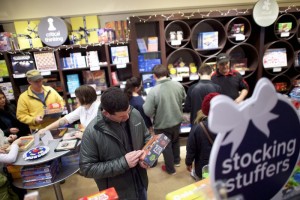 Holiday sales in the U.S. grew at the fastest rate in close to 10 years, helped by the strengthening economy as well as consumers spreading purchases out over a season that was longer, according to an online sale tracking site.
Holiday sales in the U.S. grew at the fastest rate in close to 10 years, helped by the strengthening economy as well as consumers spreading purchases out over a season that was longer, according to an online sale tracking site.
Holiday spending from November through December increased by 4.6% in comparison to the same period a year ago, beating the prediction of analysts of 3.7%, said the online sales tracking firm on Saturday.
That performance was the best since 2005, prior to the recession, when sales were up by 5.2%.
Shoppers had more cash this season to spend, thanks to gas prices being lower and a job market that improved.
The outcomes of sales underscores the fall in importance of one day within the entire shopping season, said the tracking site’s report.
Another research firm online said that retail sales had increased by 3.2% from November 1 through January 4, in comparison to an increase in sales last year during the same period of just 0.5%.
Sales were up 5.3% from Thanksgiving Day through the next Monday known as Cyber Monday.
Sales were up 2.2% in November of 2014, in comparison to a drop of 1.3% one year ago. December sales increase 2.9% in comparison to a gain of 1% a year ago, said the tracking firm.
Black Friday had been disappointing to many retailers this past November, which raised concerns that the holiday shopping season would not reach the initial targets.
A survey that the National Retail Federation backed, estimated that spending had tumbled by 11% during Black Friday.
The best one day sale of all season was Super Saturday, which is the weekend prior to Christmas, said the sales tracking firm, with Black Friday coming in second.
While the big shopping days of Super Saturday and Black Friday will remain at the top, consumers seem not as attracted to sales prices associated with just two days during the season.
